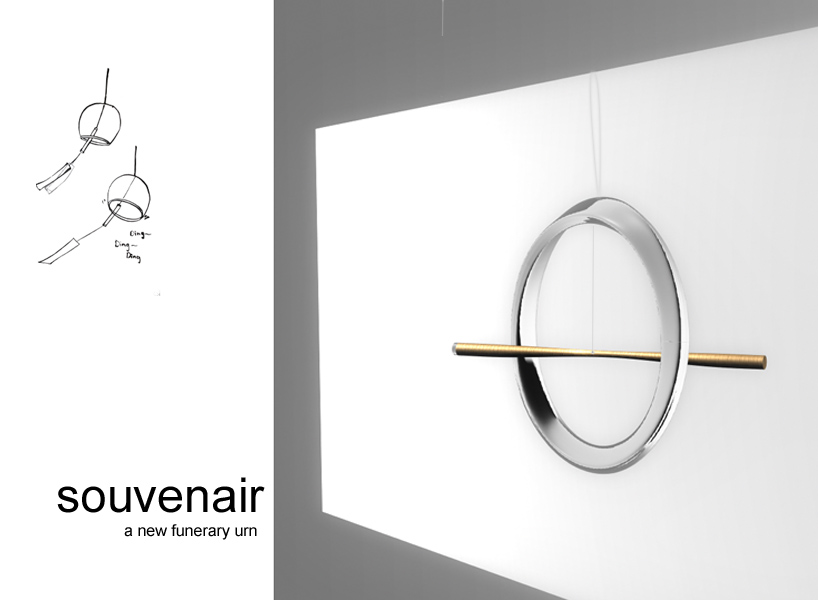
souvenair by chen jiashan from france
designer's own words:
Why should we keep the deceased ones away from our eyes ? Why should we reduce the deceased ones to silence ? The souvenair, small in size but clearly visible, can be hanged at home or in a public place. Its tiny and appeasing « diing » recalls the presence of the loved one whenever some wind blows.
Assume the dead is cremated. Most ashes may be sprinkled, but relatives could keep a tiny part of them in the depths of the souvenair. This disposal of remains is easily moved, making it adapted to modern life, where descendants have sometime spread all over the world, while reducing the overall impact of decaying human flesh to a ten centimeter-long grave. Also, each relative can have a part of the ashes in its souvenair.
The circular shape reminds eternal revival, reminds that death is part of the circle of life. The bar shape reminds the beginning and the end. The Möbius strip is a symbol of the everlasting : after a cycle, we are back where we were, but upside down, after two cycles, we are back. An epitaph can run along the strip.
See the souvenair as a line that goes through, if you believe in death as passage. See it as the empty set "Ø", if you believe in emptiness. Its metallic surface shines and reflects the light, when the sun shines, in addition of vibrating to create sound when the wind blows. So that the souvenair is really that: an urn that diffuses the memory within the air.
concept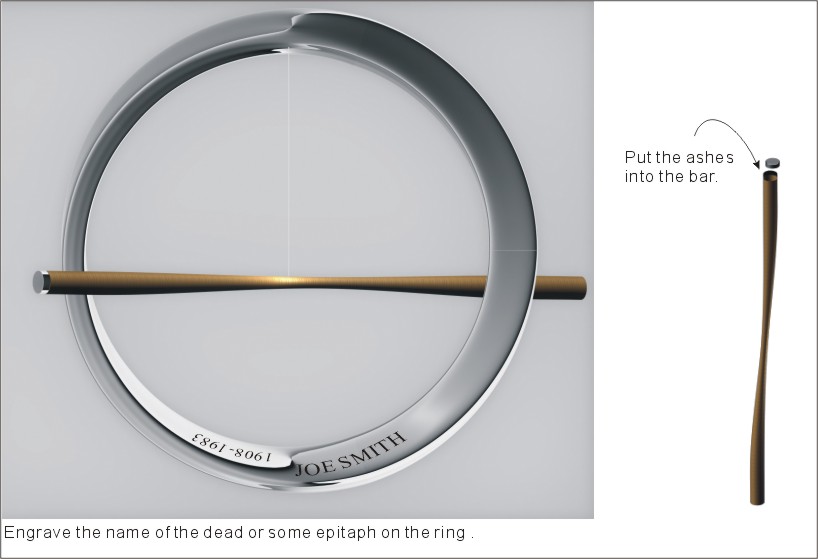 instruction
instruction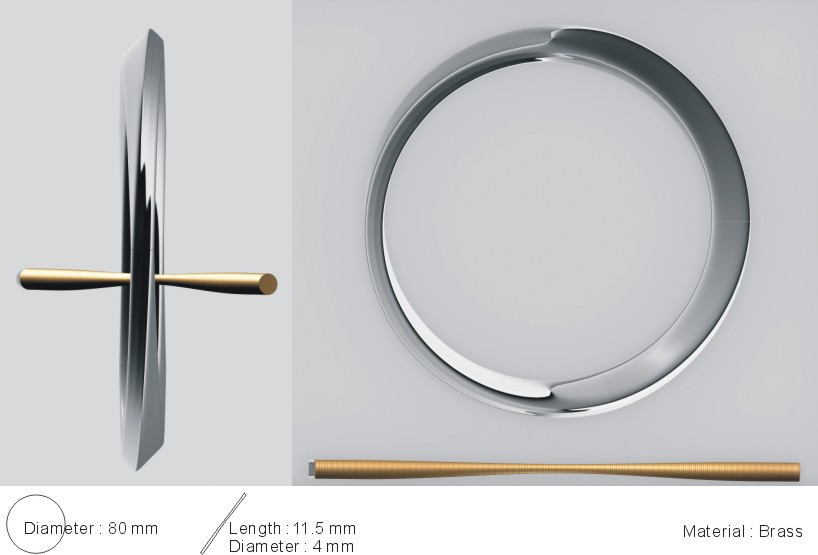 detail, dimension
detail, dimension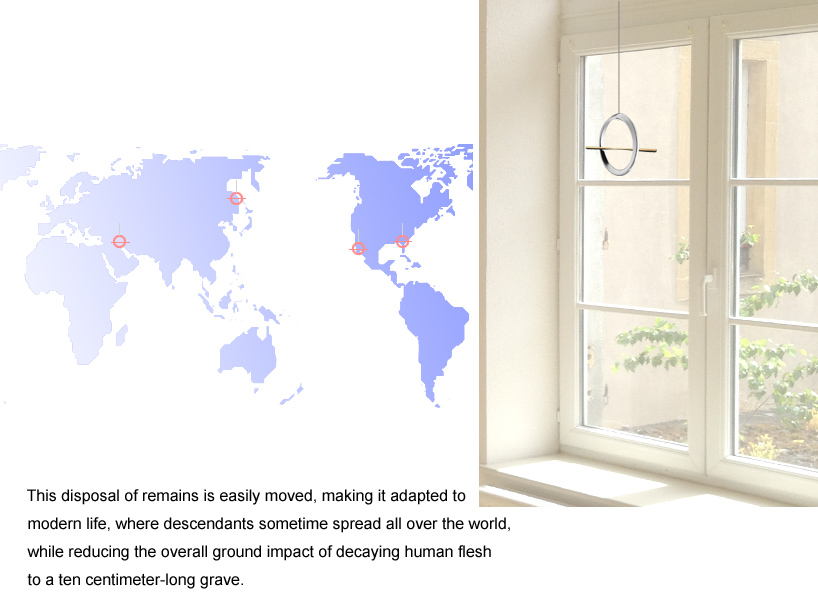 scenery, in privacy
scenery, in privacy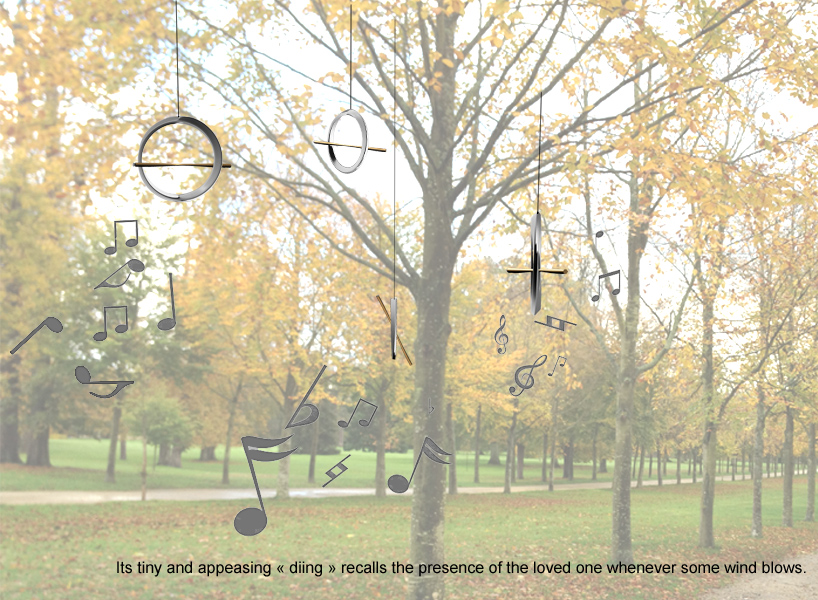 scenery, in public
scenery, in public